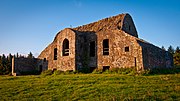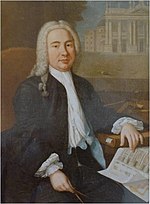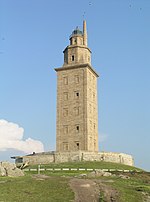Sir Edward Lovett Pearce (1699 – 7 December 1733) was an Irish architect, and the chief exponent of Palladianism in Ireland. He is thought to have initially... 22 KB (2,549 words) - 09:18, 16 April 2024 |
 | Parliament House, Dublin (category Edward Lovett Pearce buildings) Parliament Buildings, Stormont), was entrusted to an architect, Edward Lovett Pearce, who was a member of parliament and a protégé of the Speaker of the... 30 KB (3,557 words) - 15:13, 11 April 2024 |
Zealand businessman Edward Pearce, Baron Pearce (1901–1990), British judge Edward Lovett Pearce (1699–1733), Irish architect Edward Pearce (British Army officer)... 689 bytes (105 words) - 10:43, 8 January 2024 |
 | Gloster House (category Edward Lovett Pearce buildings) design of the house has sometimes been attributed to the architect Edward Lovett Pearce who was a cousin of the owner, Trevor Lloyd, at the time the main... 16 KB (1,446 words) - 17:20, 26 April 2024 |
 | but more likely guided by professionals (John Wood of Bath, Sir Edward Lovett Pearce and Richard Cassels) and completed around 1751 to 1757. The original... 15 KB (1,399 words) - 02:17, 27 April 2024 |
Wayback Machine Castletown House, Co Kildare (Alessandro Galilei & Edward Lovett Pearce) – Irish Architecture Archived 27 August 2006 at the Wayback Machine... 13 KB (1,202 words) - 10:13, 8 August 2023 |
Desart Court (category Edward Lovett Pearce buildings) Lord Desart, John Cuffe. The architect is believed to have been Sir Edward Lovett Pearce. The house was a two-storey core building with a basement, linked... 6 KB (201 words) - 20:03, 24 January 2024 |
 | Summerhill House (category Edward Lovett Pearce buildings) designed by Sir Edward Lovett Pearce and completed by Richard Cassels in the Palladian style, although Sir John Vanbrugh, who was related to Pearce and with... 15 KB (1,524 words) - 14:02, 23 February 2024 |
 | Newry Canal (category Edward Lovett Pearce buildings) Burgh died in 1730, to be succeeded by Edward Lovett Pearce, and work began on the canal in 1731. Although Pearce was officially running the scheme, he... 21 KB (3,044 words) - 19:53, 12 January 2024 |
 | Montpelier Hill (category Edward Lovett Pearce buildings) unknown: the author Michael Fewer has suggested it may have been Edward Lovett Pearce (1699–1733) who was employed by Conolly to carry out works at Castletown... 39 KB (4,820 words) - 02:00, 10 August 2023 |
 | Drumcondra House (category Edward Lovett Pearce buildings) part of All Hallows College. It was designed by the architects Sir Edward Lovett Pearce and Alessandro Galilei and was built in 1726 for Marmaduke Coghill... 11 KB (799 words) - 09:59, 1 March 2024 |
 | Bellamont House (category Edward Lovett Pearce buildings) Judge Thomas Coote and likely designed by his nephew, the architect Edward Lovett Pearce. It is considered to be one of the finest examples of Palladian architecture... 10 KB (658 words) - 15:45, 18 July 2023 |
 | Ashley Park (category Edward Lovett Pearce buildings) Burke's Irish Family Records, Burkes Peerage, page 691 (London) George Edward Cokayne, editor, The Complete Baronetage, 5 volumes (no date (c. 1900);... 10 KB (1,265 words) - 17:06, 13 November 2023 |
 | House, an eighteenth-century Palladian house in the style of Sir Edward Lovett Pearce, near Cashel, County Tipperary. An extra storey was added to the... 8 KB (719 words) - 21:14, 16 March 2024 |
 | opened in 1661, it was 70 feet (21 m) wide, the widest in the city. Edward Lovett Pearce designed a theatre for the street, built 1733–34 and merged with... 9 KB (670 words) - 23:15, 22 October 2023 |
 | of the White House Francis Johnston Sheila O'Donnell Thomas Parke Edward Lovett Pearce Kevin Roche Michael Scott Sara Allgood – actress Jonas Armstrong... 53 KB (5,400 words) - 21:41, 23 March 2024 |
 | Castletown House (category Edward Lovett Pearce buildings) his wife, who on her own death in 1821 bequeathed it to her great-nephew, Edward Michael Pakenham, later the MP for Donegal, on condition he adopted the... 15 KB (1,461 words) - 12:36, 19 November 2023 |













